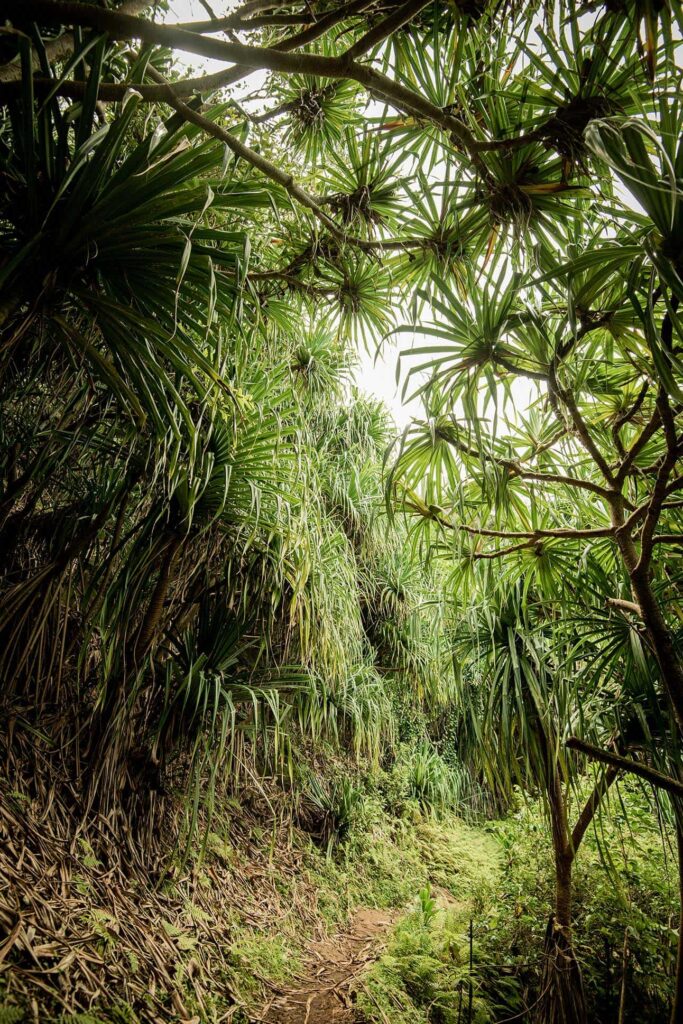Text by Eunica Escalante
Images by Erica Taniguchi
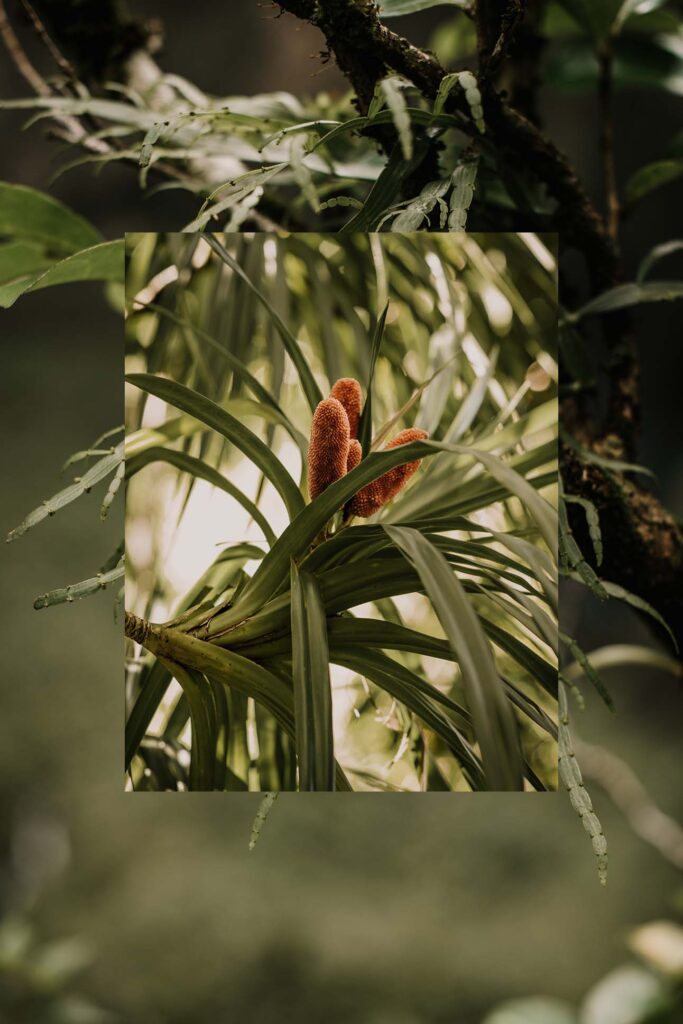
(Foreground) Pictured amid the lush canopy of Hanakāpīʻai Valley along the Nā Pali Coast, ʻieʻie is prized in Native Hawaiian culture for its extensive ʻie (roots), which it uses to scale the length of host trees. Growing up to 20 feet long, the roots were traditionally used to weave baskets, fishtraps, and kiʻi—elaborate statues that symbolized ʻakua (Hawaiian gods).
(Background) A versatile plant, hulumoa can be found in a variety of environments, from the jungle foliage of Wailua, shown here, to the arid terrain of the islands’ dry tropical forests. Its name translates to “chicken feathers,” so named for its resemblance to a rooster’s tail.
(Above) Aʻaliʻi, photographed here along Waimea Canyon’s Kukui Trail, is a pioneer species. It’s among the first to take root after a lava flow and one of the few native plants able to sustain fires. As such, ʻaʻaliʻi represents rootedness and resilience, as exhibited by the ʻōlelo noʻeau (Hawaiian proverb), “He ‘a‘ali‘i kū makani mai au; ‘a‘ohe makani nāna e kūla‘i.” I am a wind-resistant ʻaʻaliʻi, no wind can topple me over.
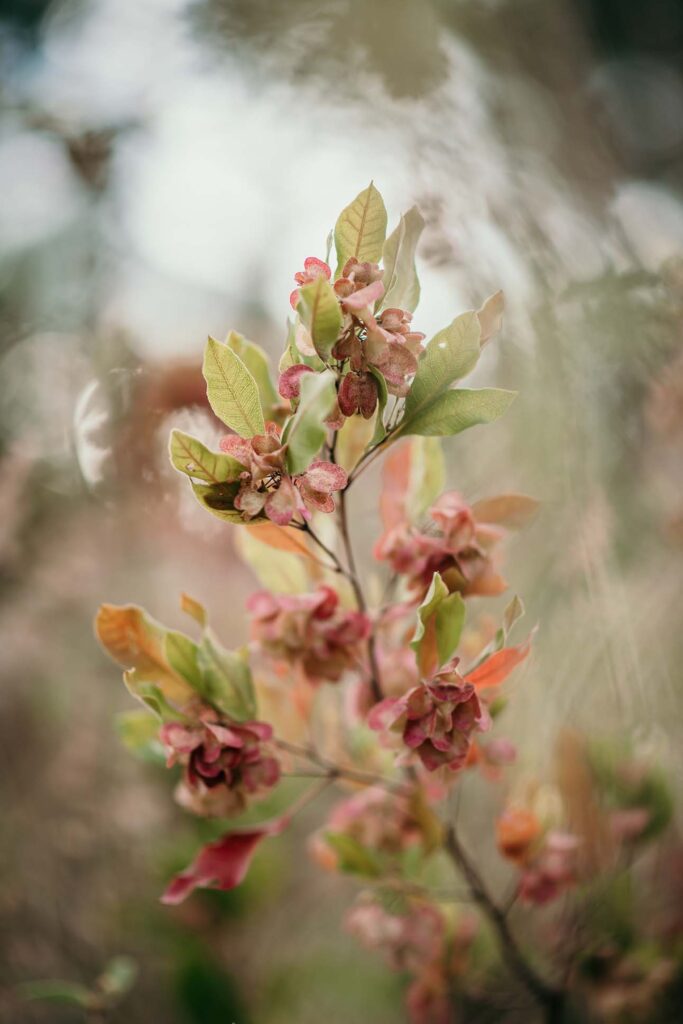
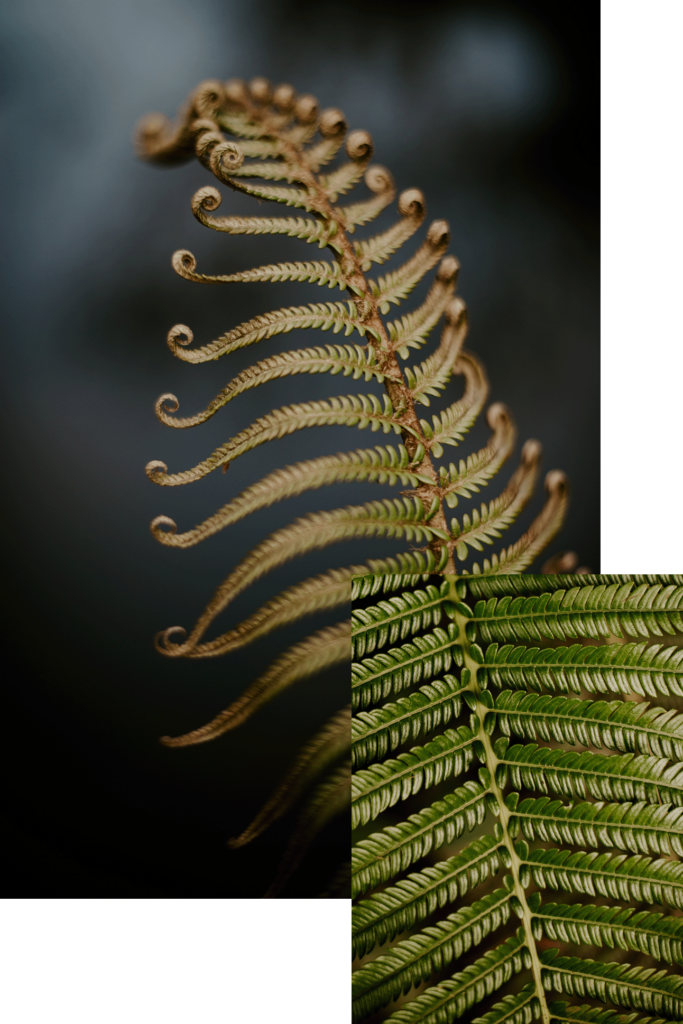
Brought to the Polynesian islands by voyagers, ʻōlena possesses medicinal properties that have been valued for centuries. It is used in lāʻau lapaʻau (plant medicine) to remedy a variety of ailments, and kapa makers favor its bright yellow pigment to create dyes. It can be identified in the wild by its fragrant inflorescence, as seen growing here in Kalalau Valley.
Often mistaken for the more common hāpuʻu, ʻamaʻu is distinguished by the fiery red hue that colors younger ferns. It’s an apt attribute, for it is commonly found sprouting amid cooled lava flows, though ʻamaʻu also thrives in damp conditions, like here in the Kōkeʻe forest.
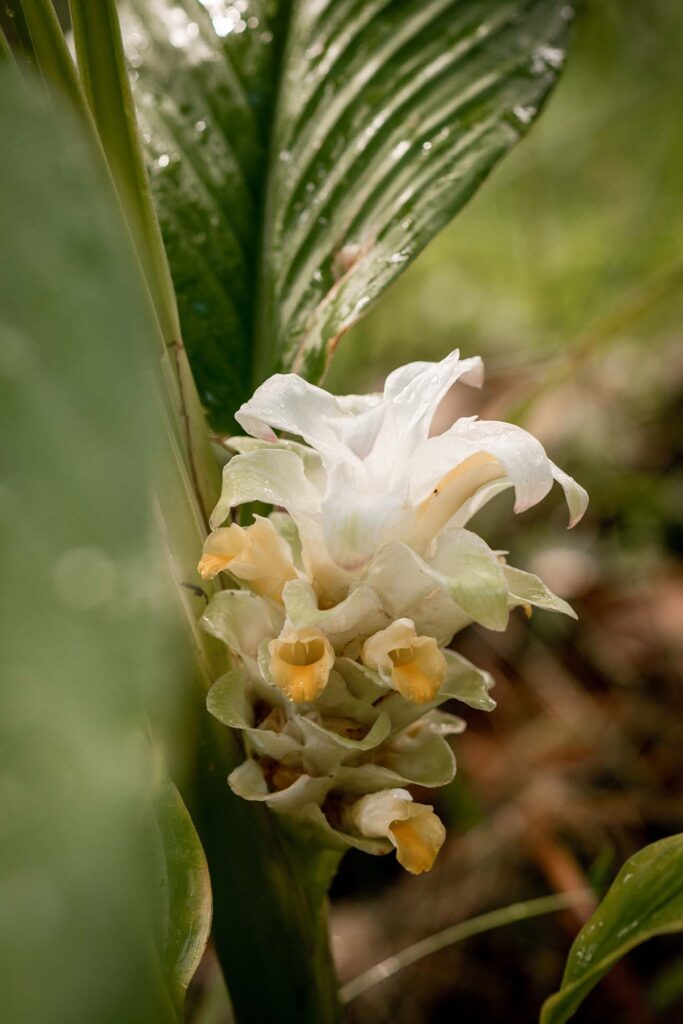
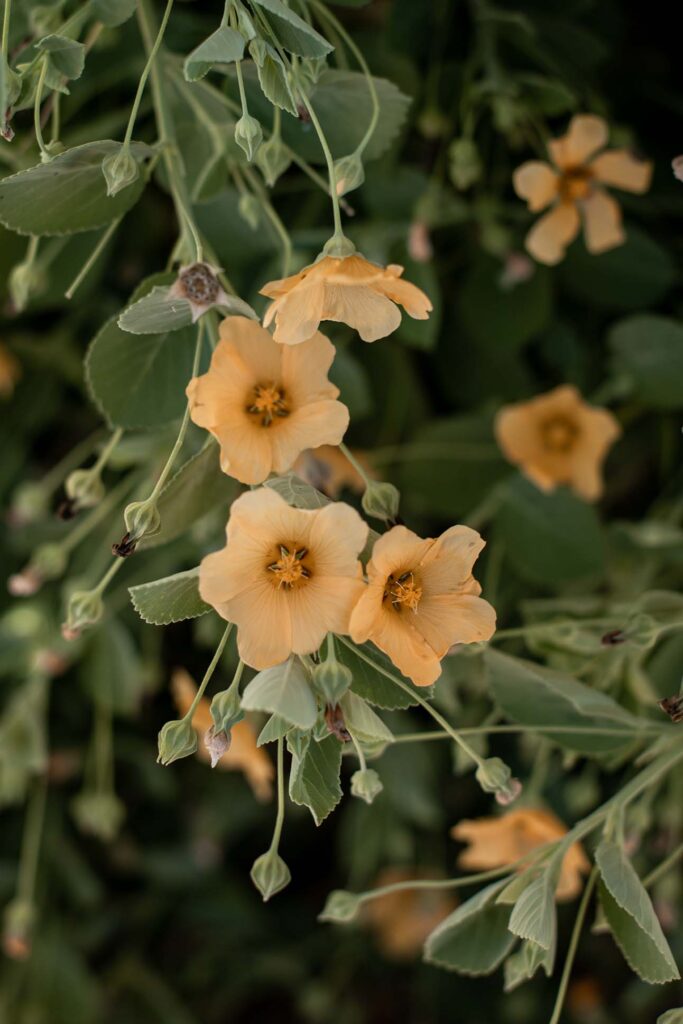
Characterized by its signature golden blooms, ʻilima is a favorite of lei makers for its delicate yet vivid petals. Giving an ʻilima lei is considered an act of well-wishing. A single-strand lei can take up to thousands of ʻilima to complete. Thankfully, ʻilima thrives in any condition, like along the dry southern coast of Kauaʻi, as seen here.
Ferns, like this palaʻā, were among the first plants to colonize the islands. In Native Hawaiian culture, each fern species served a distinct purpose. Palaʻā, pictured here in Kōkeʻe and Wainiha, is known as the lace fern for its filigreed fronds. The goddess Pā‘ūopala‘ā is named after the fern, as she often manifests as a skirt made of palaʻā.
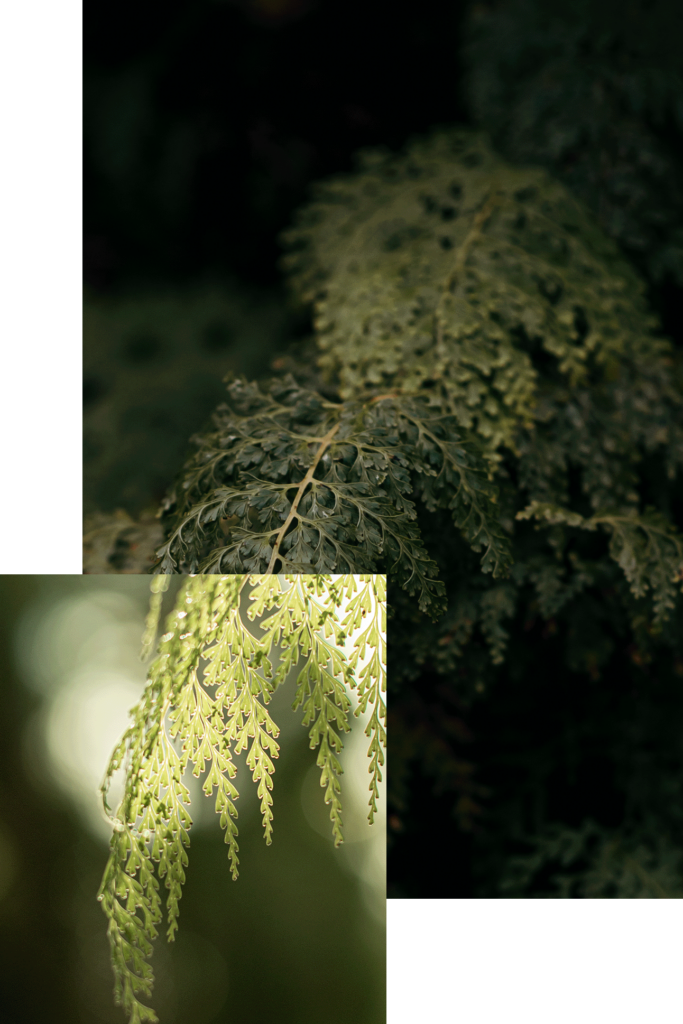
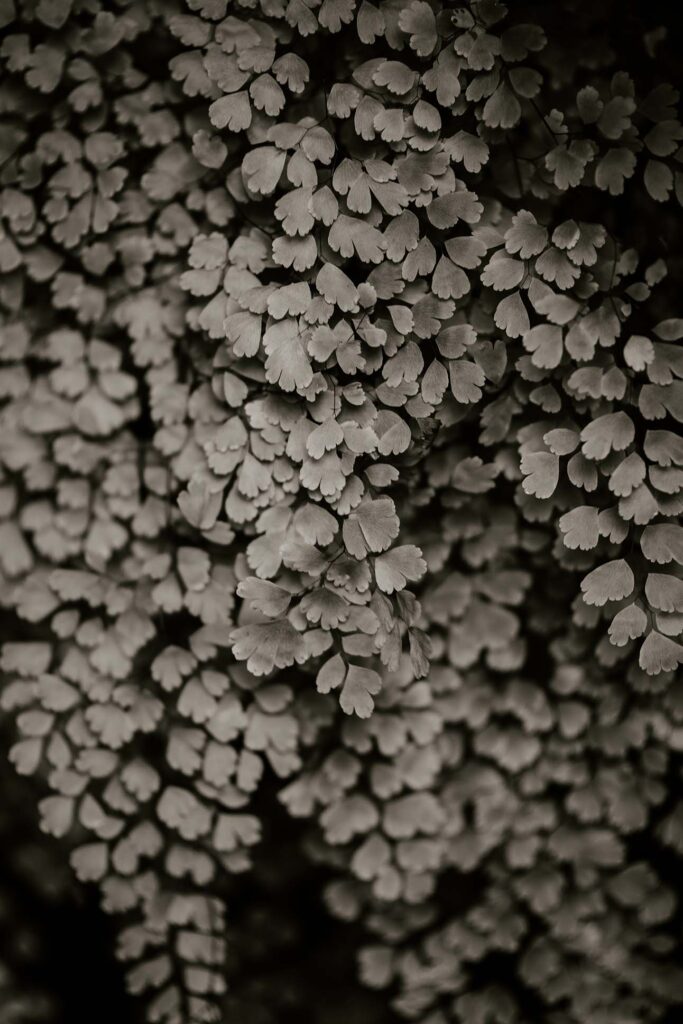
ʻIwaʻiwa is the only maidenhead fern native to Hawaiʻi, a rare sight in the wild compared to the more common varieties later introduced to the islands. ʻIwaʻiwa favors damp and shaded environments, like sea caves along coastlines, as photographed here inside Maniniholo Dry Cave in Hāʻena.
As this fern’s name suggests, wahine noho mauna (mountain-dwelling woman) grows solely in high-elevation forests. Easy to miss, its fronds reach only up to eight inches long. Its presence in a forest, as seen here along the Alakaʻi Swamp Trail, signifies a healthy ecosystem.
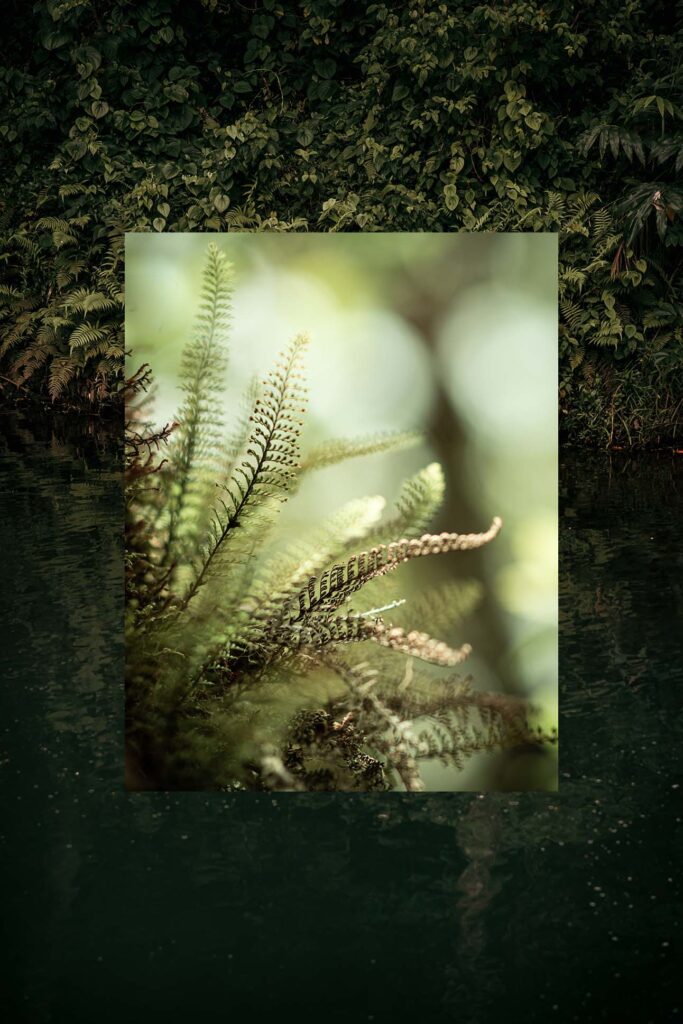
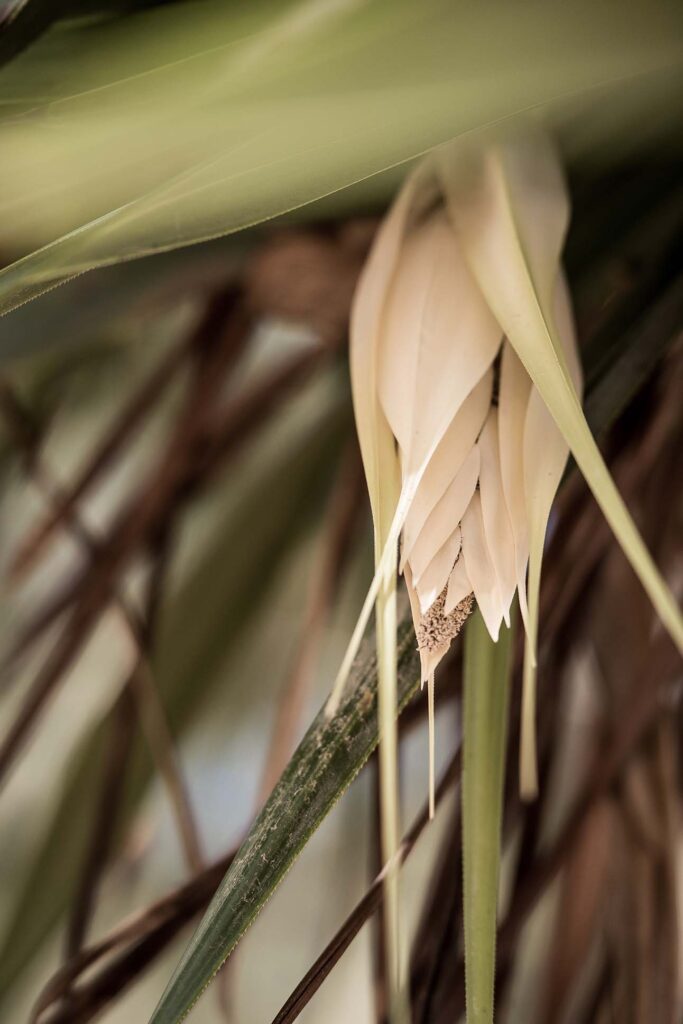
Valued for its versatility, hala is a necessity in Native Hawaiian culture. The leaves are woven into mats, pillows, and thatching. The roots are fashioned into cordage. Hala flourishes across Hawaiʻi in coastal groves or in valleys, like along Hanakāpīʻa Trail, pictured at right. Male trees, pictured above, grow fragrant white flowers called hīnano, whose supple bracts are woven into mats. As male hala trees are scarcer than their female counterparts, a hīnano bloom is particularly prized.
